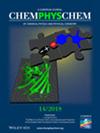Size and Morphology Dependent Activity of Cu Clusters for CO2 Activation and Reduction: A First Principles Investigation
IF 2.3
3区 化学
Q3 CHEMISTRY, PHYSICAL
引用次数: 0
Abstract
Various Cu‐based materials in diverse forms have been investigated as efficient catalysts for electrochemical reduction of CO2; however, they suffer from issues such as higher over potential and poor selectivity. The activity and selectivity of CO2 electro reduction have been shown to change significantly when the surface morphology (steps, kinks, and edges) of these catalysts is altered. In light of this, size and morphology dependent activity of selected copper clusters, Cun (n=2‐20) have been evaluated for the activation and reduction of CO2 molecule. The phase‐space of these copper clusters is rich in conformations of distinct morphologies starting from planar, 2D geometries to prolate‐shaped geometries and also high‐symmetry structures. The binding efficiency and the activation of CO2 are highest for medium sized clusters (n=9‐17) with prolate‐morphologies as compared to small or larger sized CunCO2 clusters that are existing mainly as planar (triangular, tetragonal etc.) or highly‐symmetric geometries (icosahedron, capped‐icosahedron etc.), respectively. The best performing (prolate‐shaped) CunCO2 conformations are quite fluxional and also they are thermally stable, as demonstrated by the molecular dynamics simulations. Furthermore, on these CunCO2 conformations, the step‐by‐step hydrogenation pathways of CO2 to produce value‐added products like methanol, formic acid, and methane are exceptionally favorable and energy‐efficient.铜簇在二氧化碳活化和还原中的活性与尺寸和形态有关:第一原理研究
作为电化学还原二氧化碳的高效催化剂,研究人员对各种不同形式的铜基材料进行了研究;然而,这些材料存在过电位较高和选择性较差等问题。研究表明,当这些催化剂的表面形态(台阶、扭结和边缘)发生变化时,二氧化碳电还原的活性和选择性也会发生显著变化。有鉴于此,我们对选定铜簇 Cun(n=2-20)在活化和还原 CO2 分子方面的活性进行了评估。这些铜簇的相空间具有丰富的构象,形态各异,从平面、二维几何形状到长方形几何形状,还有高对称性结构。与主要以平面(三角形、四角形等)或高对称性几何结构(二十面体、封顶二十面体等)存在的小型或大型 CunCO2 团簇相比,具有突起形态的中型团簇(n=9-17)的结合效率和二氧化碳活化率最高。分子动力学模拟结果表明,性能最好的 CunCO2 构象(长方体)具有很强的通量,而且热稳定性也很好。此外,在这些 CunCO2 构象上,二氧化碳逐步加氢生成甲醇、甲酸和甲烷等高附加值产品的途径非常有利且节能。
本文章由计算机程序翻译,如有差异,请以英文原文为准。
求助全文
约1分钟内获得全文
求助全文
来源期刊

Chemphyschem
化学-物理:原子、分子和化学物理
CiteScore
4.60
自引率
3.40%
发文量
425
审稿时长
1.1 months
期刊介绍:
ChemPhysChem is one of the leading chemistry/physics interdisciplinary journals (ISI Impact Factor 2018: 3.077) for physical chemistry and chemical physics. It is published on behalf of Chemistry Europe, an association of 16 European chemical societies.
ChemPhysChem is an international source for important primary and critical secondary information across the whole field of physical chemistry and chemical physics. It integrates this wide and flourishing field ranging from Solid State and Soft-Matter Research, Electro- and Photochemistry, Femtochemistry and Nanotechnology, Complex Systems, Single-Molecule Research, Clusters and Colloids, Catalysis and Surface Science, Biophysics and Physical Biochemistry, Atmospheric and Environmental Chemistry, and many more topics. ChemPhysChem is peer-reviewed.
 求助内容:
求助内容: 应助结果提醒方式:
应助结果提醒方式:


